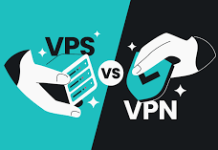Data has become the mainstay of today’s digital society. The current statistic for the amount of data created each day stands at 1.145 trillion megabytes. This gives data managers huge volumes of data from disparate sources to deal with in their operations. And sifting through different data sets with different methodologies doesn’t help their case. That’s where data virtualization comes in handy.
Data virtualization is an approach to data management where professionals can retrieve and use data with no limitations about the data source, physical location, format, and other technical details. This article delves into this approach unearthing the ins and outs of data virtualization.
What is the history of data virtualization?

The first data virtualization video on Youtube was published about 14 years ago but the term has existed since the 1960s among seasoned technology providers like IBM. Virtualization’s foray into the IT industry began with IBM introducing the first-ever hypervisors. The objective of SIMMON and CP-40 systems was to virtualize admins’ workloads and increase the efficiency of IBM’s data centers.
The activities of other tech providers like Microsoft improved the design, concept, and capability of virtual machines (VMs). For instance, Microsoft’s Hyper V allowed data managers to create virtual machines on 64-bit and 86-bit Windows systems. Today’s virtual machines have become less sophisticated and more ubiquitous and the data virtualization market value, which was a little over a billion dollars in 2017, is expected to cross $4 billion by the end of this year.
How does data virtualization work?
Data virtualizations technology has evolved a great deal. But it’s objective and approach; not so much. The overarching objective is to virtually connect a logical data layer to different data silos creating a single point of access. The data virtualization process includes three main stages: connection, abstraction, and consumption.
The connection stage deploys a virtual connection layer to draw real-time data across different data sources. An organization’s disparate sources can include SQL databases, big data systems, social media platforms, etc. At this stage, data virtualizations loads metadata from different sources and the DV platform maps the metadata with similar data assets to the virtual data model.
The mappings help generate protocols by which each source system can convert, reformat and integrate into a unified layer. The abstraction layer acts as a bridge between data sources and business users. End users on the abstraction layer can access the schematic data models rather than the overly-complex bottom data structures. That way, the abstraction layer pulls the data attributes in, allowing data users to create virtual views on top of the physical views and metadata presented at the connection stage.
Depending on the DV tool, integration logic helps with the data modeling, matching, and converting using drag-and-drop interfaces and pre-built templates. The data virtualization tool profiles the dataset and applies data validation to enhance data quality and security, making it ready for consumption.
What are the benefits of data virtualization?

It helps to protect data and improve access speeds.
Data virtualization has several benefits for multiple data users. Generally, DV tools make data delivery easier across all application development phases, including testing, releasing, and more. Today’s on-demand data users want swift data access and delivery, hence why DV tools limit data replications and help with data integration. This ultimately improves access speeds for business users. Data virtualization platform solutions also allow organizations to insulate critical data source systems. The insulation prevents users from unintentionally altering data. Limiting unintentional changes from users can also be a great way to preserve data quality. Check it out:
All in all, data virtualization and data management‘s adoption has grown in recent years with several use-case benefits, including cloud migration and DevOps.













